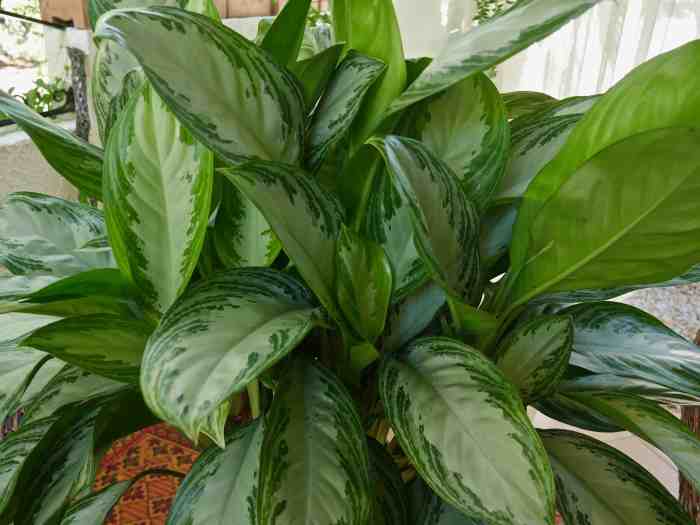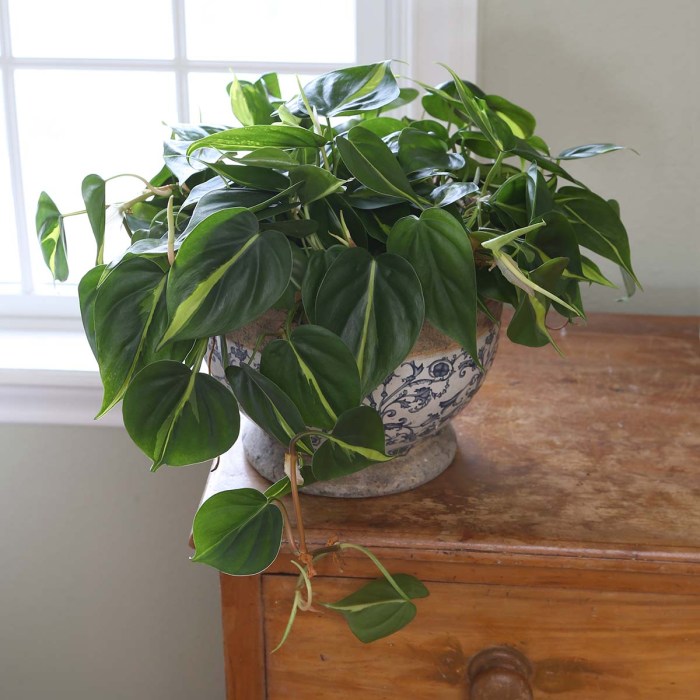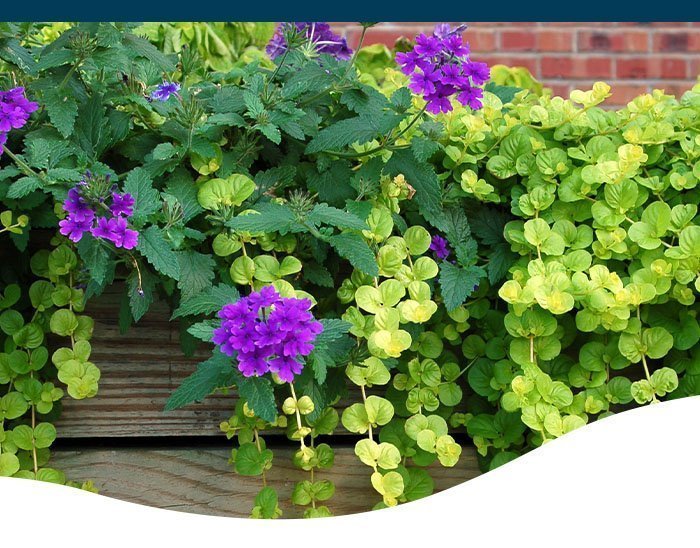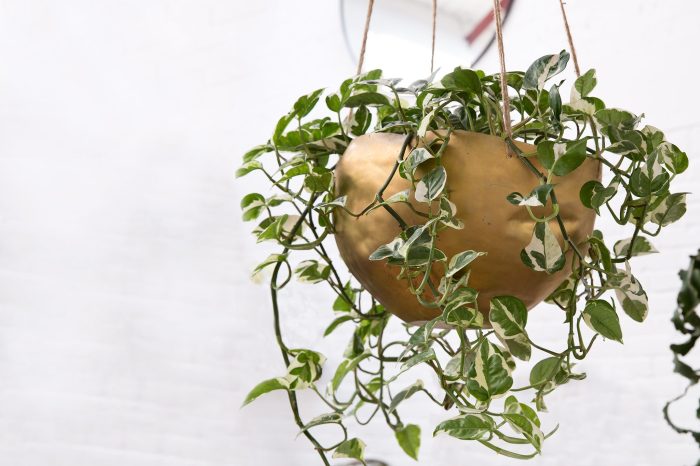Easy to grow trailing house plants are a beautiful and versatile way to add life and greenery to your home. With their trailing vines and lush foliage, they can create a sense of peace and tranquility, while also purifying the air and boosting your mood.
In this guide, we’ll explore the different types of easy to grow trailing house plants, their ideal growing conditions, and how to care for them so they thrive in your home.
Types of Easy-to-Grow Trailing House Plants

Trailers are an excellent choice for plant parents who desire a touch of greenery in their homes without the hassle of excessive care. These plants effortlessly cascade over the edges of pots or shelves, creating a visually appealing and space-saving addition to any room.
Within the realm of trailing houseplants, numerous species stand out due to their remarkable ease of growth. Their adaptability and resilience make them ideal for both novice and experienced plant enthusiasts.
Pothos
- Heart-shaped leaves:Pothos, also known as Devil’s Ivy, features distinctive heart-shaped leaves in vibrant shades of green.
- Trailing growth:Its vines cascade gracefully, making it a popular choice for hanging baskets or as a trailing plant on shelves.
- Adaptable:Pothos thrives in a wide range of lighting conditions, making it suitable for both bright and low-light environments.
Spider Plant
- Arching leaves:Spider plants possess long, arching leaves with variegated patterns, adding a touch of color and texture to any space.
- Spiderettes:This plant produces tiny plantlets, or spiderettes, along its stems, which can be easily propagated to create new plants.
- Easy care:Spider plants are incredibly low-maintenance and can tolerate neglect, making them ideal for those with busy schedules.
String of Pearls
- Unique foliage:String of Pearls features delicate, bead-like leaves that resemble strings of pearls, adding a touch of whimsy to any room.
- Trailing habit:Its stems cascade gracefully, making it perfect for hanging baskets or as a trailing plant on shelves.
- Water-storing leaves:The plump leaves of String of Pearls allow it to withstand periods of drought, making it a low-maintenance option.
Philodendron Micans
- Heart-shaped leaves:Philodendron Micans, also known as Velvet Leaf Philodendron, features velvety, heart-shaped leaves in deep shades of green.
- Trailing growth:Its vines trail gracefully, making it suitable for hanging baskets or as a trailing plant on shelves.
- Easy care:Philodendron Micans is a low-maintenance plant that tolerates a wide range of lighting conditions and infrequent watering.
Ideal Growing Conditions for Trailing House Plants

Trailing house plants, known for their cascading foliage and graceful growth habit, thrive under specific environmental conditions to maintain their lush appearance. Understanding these optimal conditions is crucial for their well-being and flourishing growth.
For those looking to add a touch of greenery to their home without the hassle, easy to grow trailing house plants are a great option. These low-maintenance plants can add a splash of color and texture to any room, and many of them are also suitable as easiest indoor hanging plants . With their trailing vines and lush foliage, these easy to grow trailing house plants can create a stunning vertical display, adding depth and interest to any space.
Lighting:Most trailing house plants prefer bright, indirect light. Direct sunlight can scorch their leaves, leading to discoloration and stunted growth. East or west-facing windows provide the ideal balance of light and shade. For low-light conditions, consider using artificial grow lights to supplement natural light.
Temperature
Trailing house plants generally prefer warm temperatures ranging from 65 to 80°F (18 to 27°C). Avoid placing them near cold drafts or heat sources, as extreme temperatures can cause stress and damage to the foliage.
Humidity
Maintaining adequate humidity levels is essential for trailing house plants. Most species thrive in moderate to high humidity, which helps prevent leaf browning and curling. Misting the plants regularly or using a humidifier can help increase humidity levels.
By providing the optimal lighting, temperature, and humidity conditions, you can create a thriving environment for your trailing house plants, allowing them to showcase their elegant foliage and bring a touch of nature into your home.
Trailing house plants are a great way to add a touch of greenery to your home, and they’re also surprisingly easy to grow. If you’re looking for a low-maintenance way to add some life to your space, check out these easiest hanging plants indoor . With their long, flowing stems and lush foliage, they’re sure to add a touch of elegance to any room.
And because they’re so easy to care for, you can enjoy their beauty for years to come.
Care and Maintenance of Trailing House Plants

Trailing house plants are low-maintenance additions to any home, but they still require proper care to thrive. Watering, fertilizing, and pruning are essential for keeping these plants healthy and looking their best.
Trailing houseplants are popular for their cascading foliage, which can add a touch of greenery and elegance to any room. They are also relatively easy to grow, making them a great choice for beginners. For those looking for the easiest hanging houseplants, there are several varieties that are particularly well-suited for this purpose.
Check out this article for a list of the easiest hanging houseplants to add to your home décor. These plants are not only easy to care for but also offer a variety of textures and colors to enhance any space.
Watering
Trailing house plants need regular watering, but it’s important to avoid overwatering or underwatering. Overwatering can lead to root rot, while underwatering can cause the leaves to wilt and turn brown.
- Water the plant when the top inch of soil feels dry to the touch.
- Water the plant deeply, until water drains out of the bottom of the pot.
- Allow the plant to drain completely before putting it back in its saucer.
Fertilizing
Trailing house plants should be fertilized every few weeks during the growing season. Use a balanced liquid fertilizer diluted to half strength.
- Apply the fertilizer to the soil around the plant.
- Do not fertilize the plant during the winter months.
Pruning, Easy to grow trailing house plants
Regular pruning is essential for keeping trailing house plants healthy and looking their best. Pruning removes dead or damaged leaves and stems, and it encourages the plant to produce new growth.
- Prune the plant back to the desired length.
- Remove any dead or damaged leaves or stems.
- Prune the plant regularly, especially during the growing season.
Decorative Uses of Trailing House Plants

Trailing house plants are renowned for their ability to transform any space into a lush, verdant oasis. Their cascading foliage adds a touch of whimsy and elegance to any room, creating a sense of depth and movement.
Whether you’re looking to soften the edges of a sharp-angled room or add a splash of color to a neutral palette, trailing house plants offer endless possibilities for decorative enhancement.
Hanging and Trailing
Hanging trailing house plants from the ceiling or on high shelves is a popular way to showcase their graceful foliage. This creates a cascading effect that draws the eye upwards, adding height and visual interest to the space.
- Suspend planters from the ceiling using macrame hangers or chains for a bohemian touch.
- Mount trailing plants on wall-mounted shelves or trellises to create a living wall that purifies the air and adds a touch of nature to your home.
- Hang baskets of trailing plants from the eaves of a porch or patio to create a welcoming outdoor ambiance.
Displaying on Tables and Surfaces
Trailing house plants can also be displayed on tables, shelves, and other surfaces to add a touch of greenery and texture to the space.
- Place a trailing plant on a coffee table or side table to create a focal point and add a touch of whimsy.
- Drape a trailing plant over a bookshelf or cabinet to soften the edges and add a touch of nature to your storage space.
- Create a hanging terrarium with trailing plants for a unique and eye-catching display that adds a touch of greenery to your desk or windowsill.
Troubleshooting Common Issues with Trailing House Plants

Trailing house plants, while generally low-maintenance, can encounter various issues that affect their health and appearance. By understanding the causes and implementing effective solutions, plant owners can ensure their trailing beauties thrive.
Common problems include yellowing leaves, stunted growth, and pests. Yellowing leaves can indicate nutrient deficiencies, overwatering, or insufficient sunlight. Stunted growth may result from rootbound conditions, lack of nutrients, or improper watering practices. Pests, such as aphids, mealybugs, and spider mites, can also infest trailing house plants, causing damage to foliage and stems.
Pest Control
- Aphids:Tiny, pear-shaped insects that feed on plant sap, causing curled and yellowed leaves. Control with insecticidal soap or neem oil.
- Mealybugs:White, cottony insects that attach to stems and leaves, secreting honeydew that attracts ants. Use rubbing alcohol to remove mealybugs and apply insecticidal soap.
- Spider mites:Microscopic pests that cause fine webbing on leaves and stippling damage. Control with insecticidal soap or neem oil, and increase humidity around the plant.
Other Issues
To address yellowing leaves, ensure adequate sunlight, fertilize regularly, and avoid overwatering. Stunted growth can be resolved by repotting into a larger container, providing balanced nutrients, and watering appropriately. Additionally, regular inspection and isolation of infested plants help prevent pest outbreaks.
Epilogue: Easy To Grow Trailing House Plants

Trailing house plants are a great way to add a touch of nature to your home, and they’re surprisingly easy to care for. With the right care, they can thrive for years to come, bringing you joy and beauty for seasons to come.
FAQ Compilation
What are the most popular types of easy to grow trailing house plants?
Some of the most popular types of easy to grow trailing house plants include pothos, philodendron, spider plants, and English ivy.
What are the ideal growing conditions for trailing house plants?
Trailing house plants prefer bright, indirect light and well-draining soil. They should be watered regularly, but allowed to dry out slightly between waterings.
How often should I fertilize my trailing house plants?
Trailing house plants should be fertilized monthly during the growing season with a balanced liquid fertilizer.